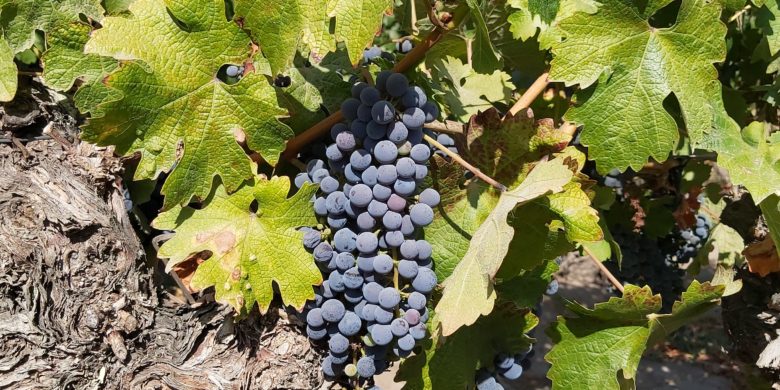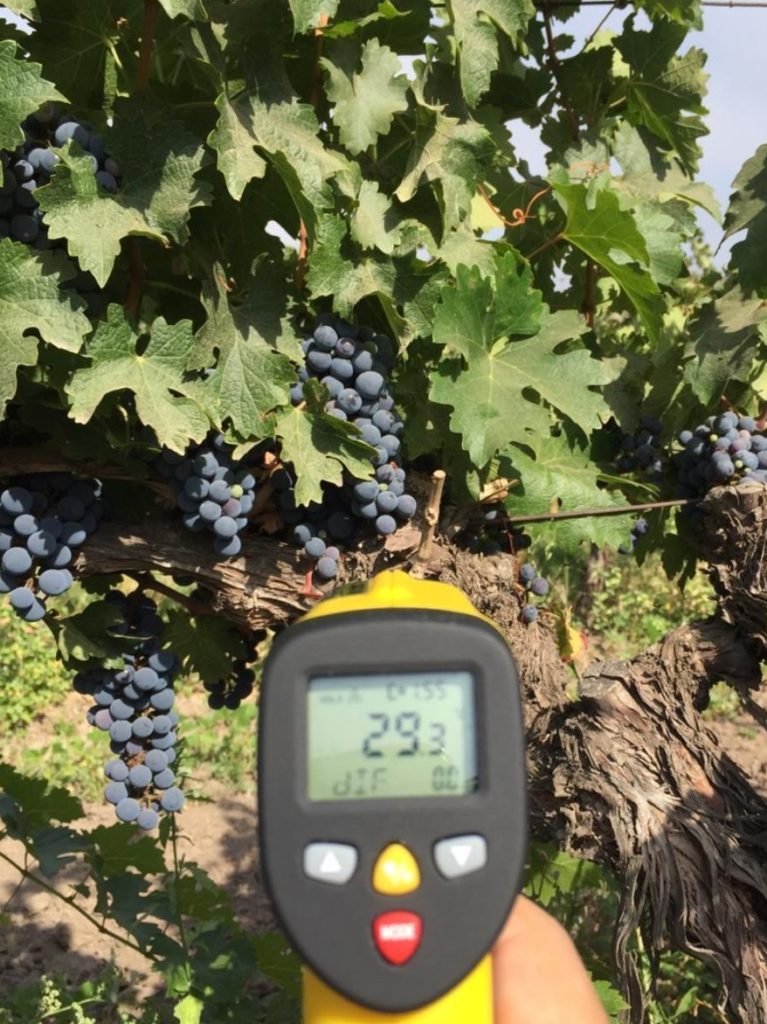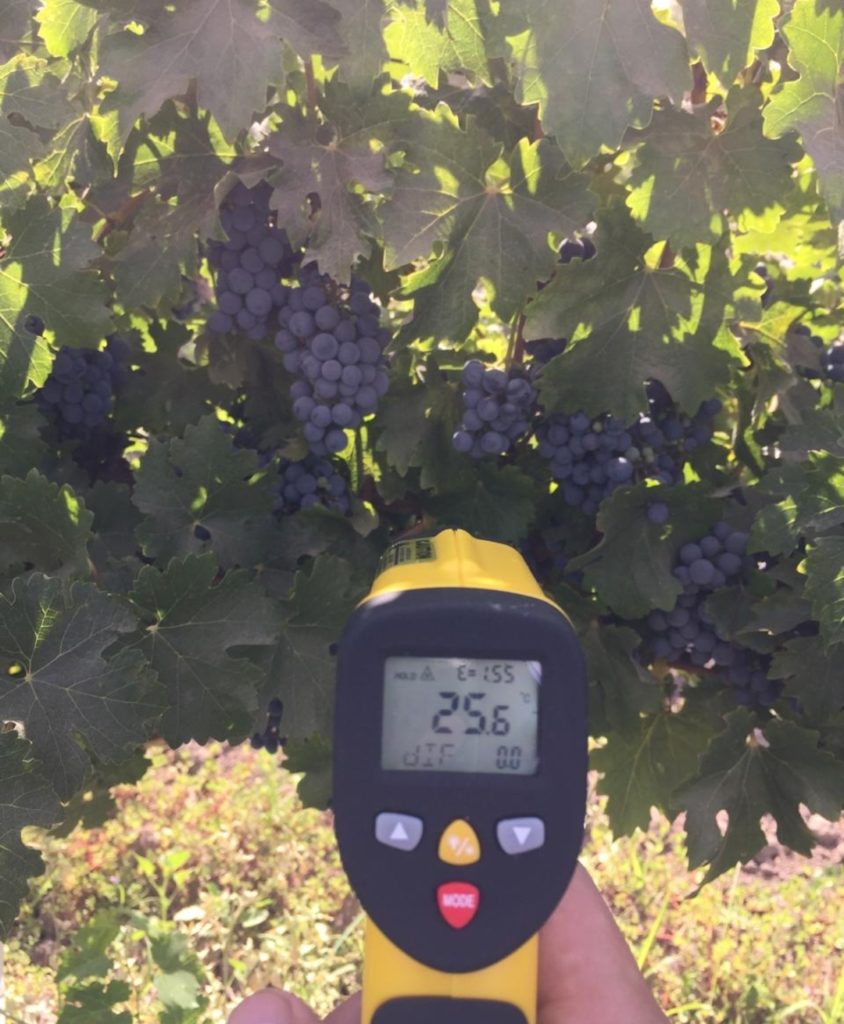HISTORICAL HARVEST DATE FOR CHILEAN CABERNET

Heat waves in summer and drought left by the Winter, sign the beginning of an advanced vintage 2020 mainly for Cabernet Sauvignon. We talked with winemakers along the country to know more about the details.
As usual, social media gave the alarm. Viña Tabali’s vinegrower in Instagram on February 4th told he was already harvesting Malbec in the heights of Limari; the first Chardonnay grapes for the new Tatié sparkling of the vineyard had already been harvested on February 20th. On February 7th, meanwhile, the harvest of Syrah in Alcohuaz was starting a week earlier than last year. Little by little the advanced harvesting dates were more frequent. But without doubt, the most remarkable was the harvest of a Cabernet Sauvignon in Marchigüe on February 13th, when for this late variety in the Central Valley it would normally be closer to April. To know more and search for the causes behind this never before seen phenomenon we talked with winemakers responsible of vineyards along almost all Chile.
Sergio Hormazábal, chef grapegrower of Viña Ventisquero, with vineyards from Huasco to Itata, explained to WiP.cl that the high temperatures in 2020, are very similar in degrees, days and accumulation to 2017. Just like then, harvest began the first days of February with a North Chardonnay, then in mid-February with more grapes in the North and in Casablanca. “This is an advanced vintage but not record, with the massive harvest two weeks earlier. The great difference is that now we had the driest previous Winter ever, with scarcely 100 mm rain in the Central zone, what has accelerated the plants processes”. What is very surprising, he adds, is that last week they started harvesting the Cabernet on the hillsides, and that had never been done before.

This week at Ventisquero they are going to harvest all Cabernets in Maipo Costa and Maipo Andes. In general they are the mass selection Cabernet, that are on the hillsides. These are very badly hit, stressed, with advanced ripeness. If they ever had wood illness, or virus, this year it became more evident. He said also that the pinta o envero came earlier, the brix degrees are there, but the tanins are hard. That is why they will have to managed the tanins very carefully in the cellar.
Hormazábal has faith in 2020 because he thinks they are reacting on time. “Cabernets are no longer harvested in April,” he said.
This year, the wine grower said, they had 8 times over 35 degrees C. «The Syrah is more resistant. With a little watering it comes to life again. Not so the Cabernet». He has not seen this in deep soils, nor with gravity irrigation.
Hormazábal explains that even if they had have irrigate in Winter to recover the rain that did not fall, the vines never totally recover even if they have water every day. Now we should react fast and irrigate more efficiently.
Johana Pereira, Viña Estampa, who informed on the web about the harvest of Cabernet in Marchigue on February 13th, agrees with Hormazábal. This year they found the right harvesting time which they did not last year when the sugar went up to fast. This year they constantly checked their Cabernet together with Sauvignon Blanc. This year everything is advanced, she said, but maybe what is more in the center and more generously pruned is on a more usual time for harvest.
Gonzalo Guzmán, winemaker at Viña El Principal in Maipo Andes (Pirque) has a similar view. The week before last, he harvested Verdejo on historical date and Wednesday and Thursday he harvested Cabernet Sauvignon from the hillsides. He will harvest this week on the plains. In both cases, it is an historically early harvest. Up to now the earliest had been on February 26th 2012, but this year they started on the 18th. Not only due to the heat but because it did not rain in winter there was no strength with less canopia and leaves, therefore there was less photosynthetic capacity. This year some treills did not reach the first wire and there was need to cut the bud tips.
Guzmán explains that during 2012 and 2017 it was hot, but in 2020 the dry Winter factor was added. The clusters are luxurious, he not only save work not cutting the but tips and green harvest, but others complain that the yield fell in a 30%. The grapes look like blackberries and Autum clusters. This condition of strength and smaller clusters size is generalized, exclusively because the beginning of the season was restricted. Since spring there was a stress problem. Watering will not replace the winter effect. What is menacing is the impact of a winter with no rain. «The problem is, he said, that we do not know what kind of Winter we will have this year and he believes that if it is dry it is going to be a disaster. They already will have trouble with the pruning of 2021 because there was no strength. If the drought repeats it will be critical not only for the vineyards, even as they have resistance capacity, but for fruit producers that had to sacrifice part of their orchards».
Guzmán believes that as a consequence of the drougth the price of the grapes should go up, because the production cost already did.
Marcelo Retamal, enólogo de Viña De Martino, who now harvests early searching for freshness, tells us that this year he also started very early, even though as his vineyards are on freatic pools they have a different change factor. He says this year was not historically early in Elqui Valley, where the Viñedos de Alcohuaz project is, but it was so in Isla de Maipo, Central Valley. Here he already harvested Merlot and Syrah, and will start on February 26th with top range Cabernet. Up to now the earliest ever was on March 20th.
He has been harvesting for some time with 13 degrees of alcohol, and the grapes already have it, grapes do not have a vegetable character. His theory is that it has nothing to do with the heat, or the sun, it is because the water went down in the water table. He says in Isla de Maipo there have always been freatic pools. This year some gigantic trees started to lose their leaves in November. Historically these trees had their roots in the water. 15 years ago there was so much water they were planning to drain. Now all this land is clearly under hydric stress, because it has only irrigation. Before it had irrigation and the pools underneath. He considers it positive for this particular vineyard, even though drought is not good anywhere, he said. But we learned that it was not necessary to irrigate so much.
Retamal also thinks that vintage 2020 will be good. The grapes have reasonable alcohol, that is what matters, he said. Different from last year. They have acidity, and the great years are acid. In 2019 he harvested early, not as early as 2020, but there was no acidity. It was bad. That is why in 2019 all wines were corrected, some batches arrive with over 4 pH. This year Cabernet will arrive with 3.3 pH, that is very good, Retamal says. It is the same acidity he has in Alcohuaz.
He warns that it should not be waited till the seeds mature, because then they will harvest little grapes and raisins. Today there are no raisins and the grapes are not green. Retamal also agrees with Hormazábal, the extraction of skins will have to be reduced. In 2019 one could start pump over up to two volumes a day and the wine was soft, this year they will have to go to lesser volumes.
Also, advice Retamal, pay attention because the clusters weigh less. The yield estimations must have to be watched carefully. They could be 10-20% less, and if wrongly calculated even up to 40% less. The message is; those who have not started yet, check. It implies buying more barrels, more tanks, more costs.
Regarding prices of grapes in 2020, Retamal says that the people producing grapes and sells them have to be separated from the people that produce wine with their owns. Most vineyards in Chile are losing money, and independently from the low production, it leads to think that the prices are going to increase, but his impression is that they are not going to increase because the cellars are full of wine. The top lines are not increasing, he categorically admits, the medium to high lines have no demand, and that is a structural problem of how the companies have managed. He does not see an increase in the actual price, except in punctual grapes, as e.g. Sauvignon Blanc from Casablanca, that last year was given away at 30 cents a kilo, but this year is already at 50. What happened here last year was that many vineyards were abandoned, and therefore will not produce, which means there will be no grapes in the market. But for all the rest there is much fruit that has not been contracted yet.
Sebastián Labbé, Viña Santa Rita tells us they also are starting today February 26th to harvest a Cabernet Sauvignon from Alto Jahuel, and he believes that during March everything will be in the cellar. Among the causes of the unusual advance he thinks they all vines froze a little in spring, without visible signs, but the heterogeneity of the buds shows so. Green tissues are much more affected than the grape production. On the other hand, December and January thermal figures is almost historical and water was scarce.
But not all are seeing the same in their Cabernet. Víctor Vargas, Viña Santa Catalina (that just bought Portal del Alto in Alto Jahuel, Buin), tells us that they have their Cabernet Sauvignon over alluvial soil, where they have pruned to have eight tons per ha. and they hope to harvest at the end of March. They did not have hydric deficit and the sanity looks good, with compact clusters because there was good fructification.

Patricio Celedrón, Viña Viu Manent, tells us that for now their Cabernet in Colchagua is green. Those in San Carlos, are projected at the same date as always, mid April. His theory about Cabernet that are already advanced, is that their vineyards are on soils with little capacity to retain water. In his case, none of the three Viu Manent vineyards in Colchagua, had water trouble this season.
Labbé de Viña Santa Rita, has the same argument. He says that the poorer soils, which in his case are the coluviales of the hill, have a smaller amount of clay and are therefore more earlier in normal years within the Alto Jahuel. In March they usually have the Cabernet of the hillsides inside the cellar. But further down, in their alluvial terraces there is more clay and in spite there being an advance this year, they always endure more. That little clay is the magic of that place and he is almost sure that it is the secret of e.g. the great Cabernet Casa Real, that comes from a deep alluvial soil with some clay, he says.
Andrés Sánchez, winemaker at Gillmore in the dry land of the Maule, tells us that up to date they have no yet harvested anything. They may harvest Cabernet 5 days earlier, but definitely not in February. Sánchez sees the harvest advanced in some 10 days for other varieties. And his feeling is that there is a more extreme condition due to the drought. Sánchez says that in winter 2019 they had only 400 mm of rain, compared to 700 mm average. Therefore, as his peers, he means the subject of the drought is more important than the high temperatures. What happens is that it passed by mixed with politics… There are many communes without water, with restrictions… It is a long term subject and will surely reorient the vineyards in Chile. To the scarce harvest 2020 also has to be added, that spring frost affected many areas.
Sánchez also emphasizes that the harvesting dates today depend of the style of wines each one is making. «Ten years ago, more maturity was expected, while nowadays is the opposite. Certainly an agriaculture more used to irrigation will suffer more this year. But not because this is dry farming, the vineyard is not stressed, if has suffered, the conditions are tough. But it is too early to predict was is going to happen in 2020», he says.
You are reading WiP.cl, the first and only independent wine press project in Chile and South America sponsored by its readers, not by wineries. To remain independent and continue talking about wines as only we can, we have the support of our readers. You can also contribute from $1,000 ![]() or subscribe and receive the #SuscriptorWiP card with which you will have access to discounts on wine tastings and events related to 12 months, for only $19,900 per year (not per month)
or subscribe and receive the #SuscriptorWiP card with which you will have access to discounts on wine tastings and events related to 12 months, for only $19,900 per year (not per month) ![]() . Renew your annual subscription for only $16,500.-
. Renew your annual subscription for only $16,500.-
We have six eyes behind each note, anyway if you find any information or writing error please let us know at contact@wip.cl
Artículos relacionados:
https://wip.cl/articulos/mas-alla-del-caso-cabernet-3er-informe-de-cosecha-2019-2020/



